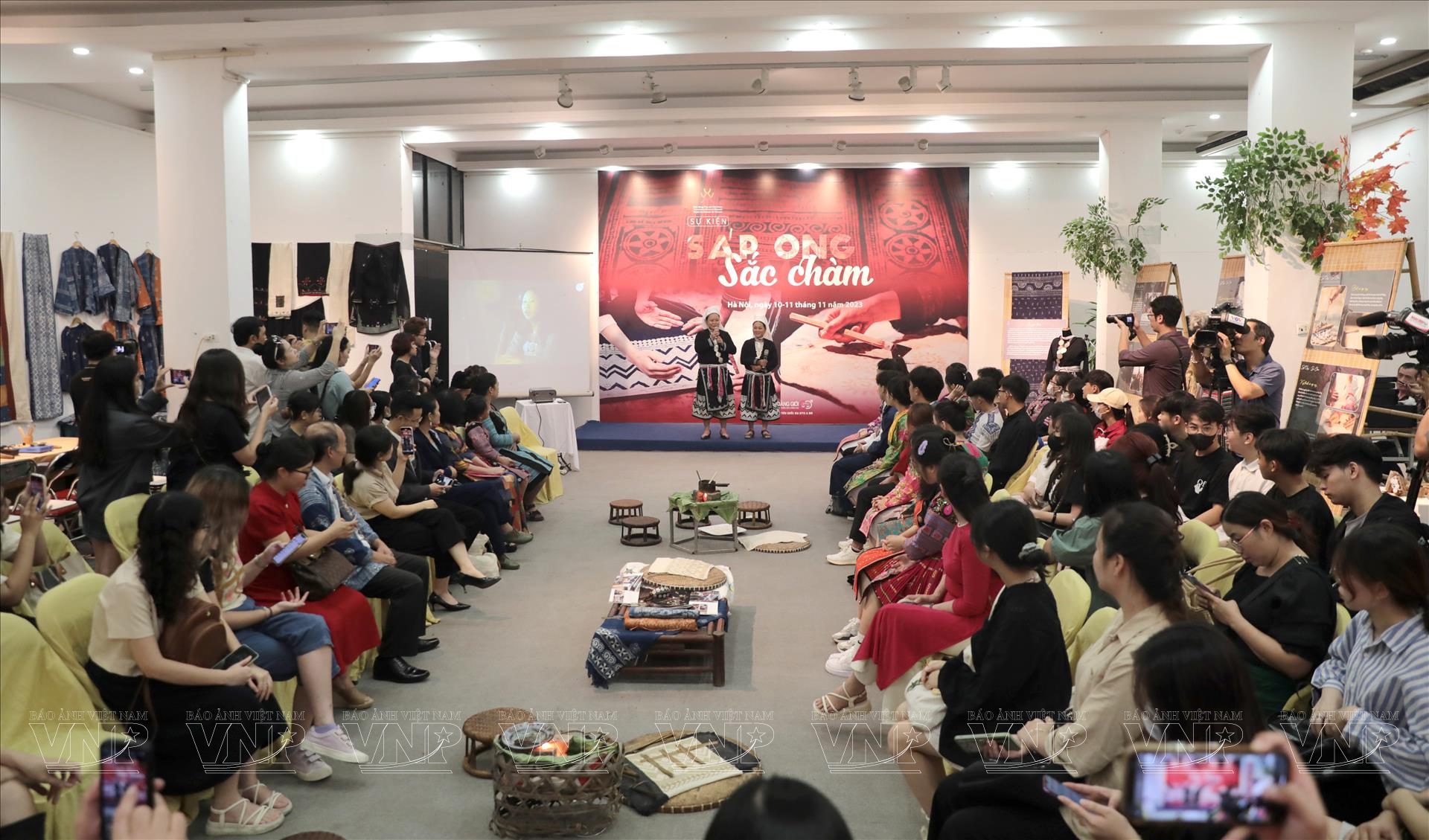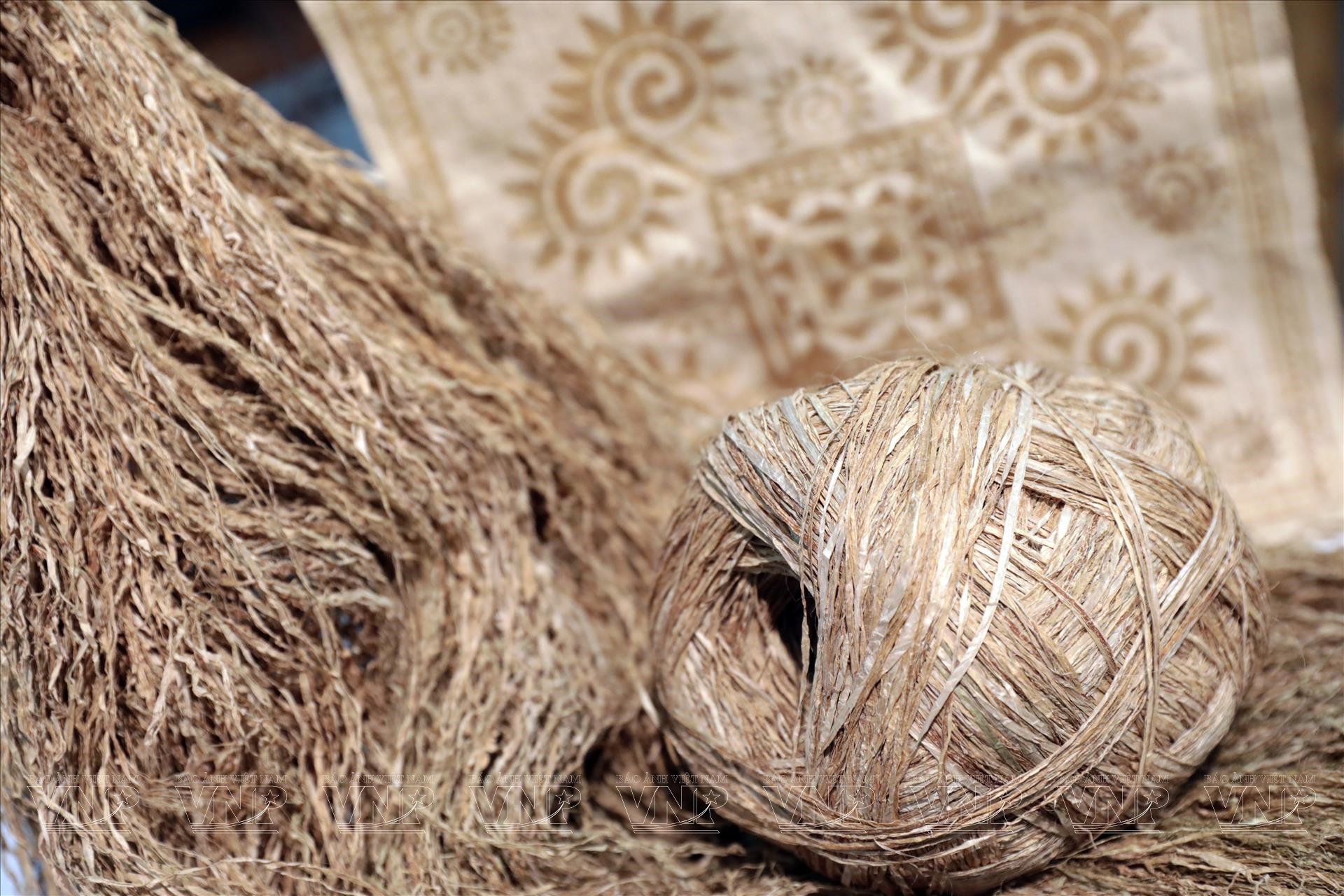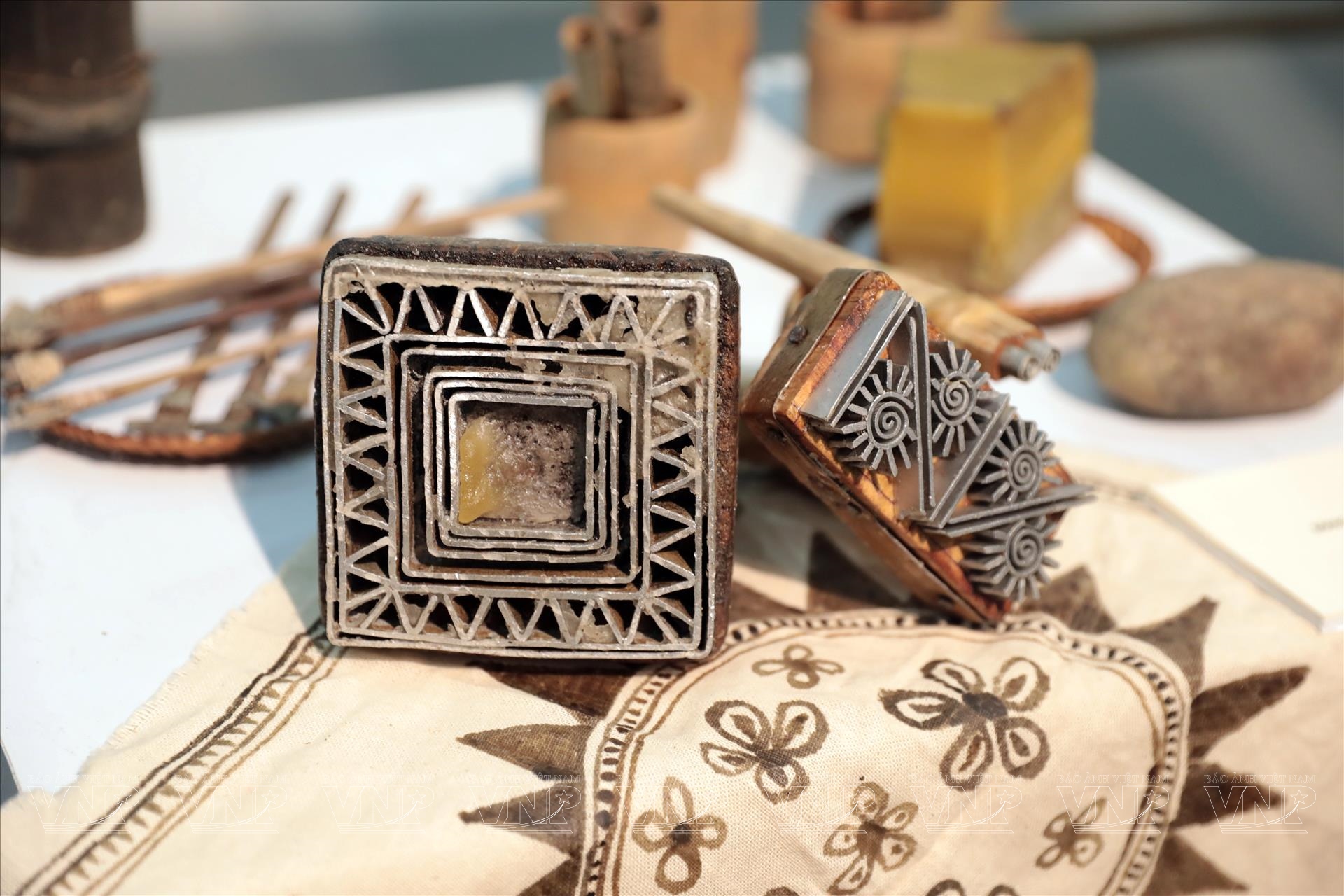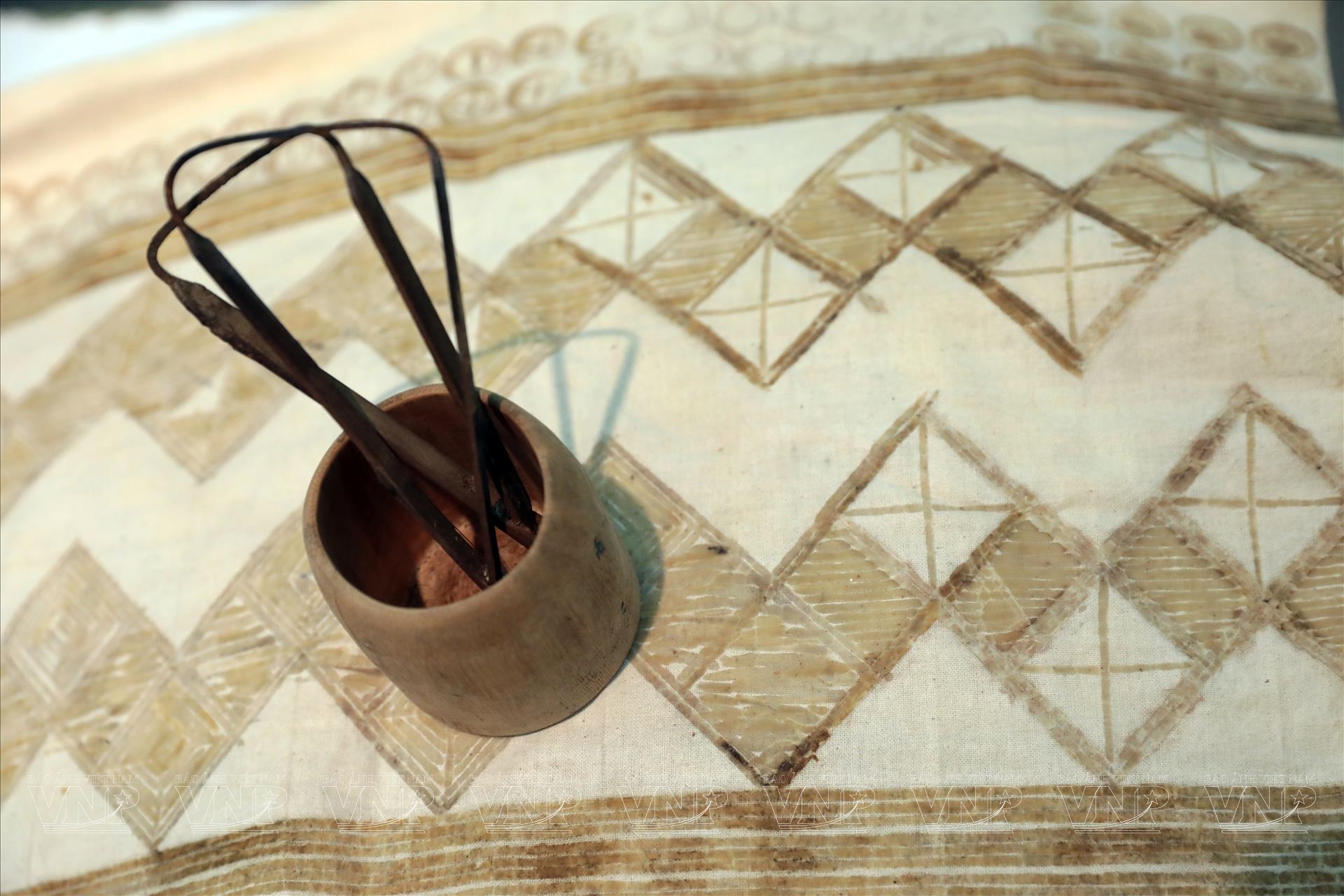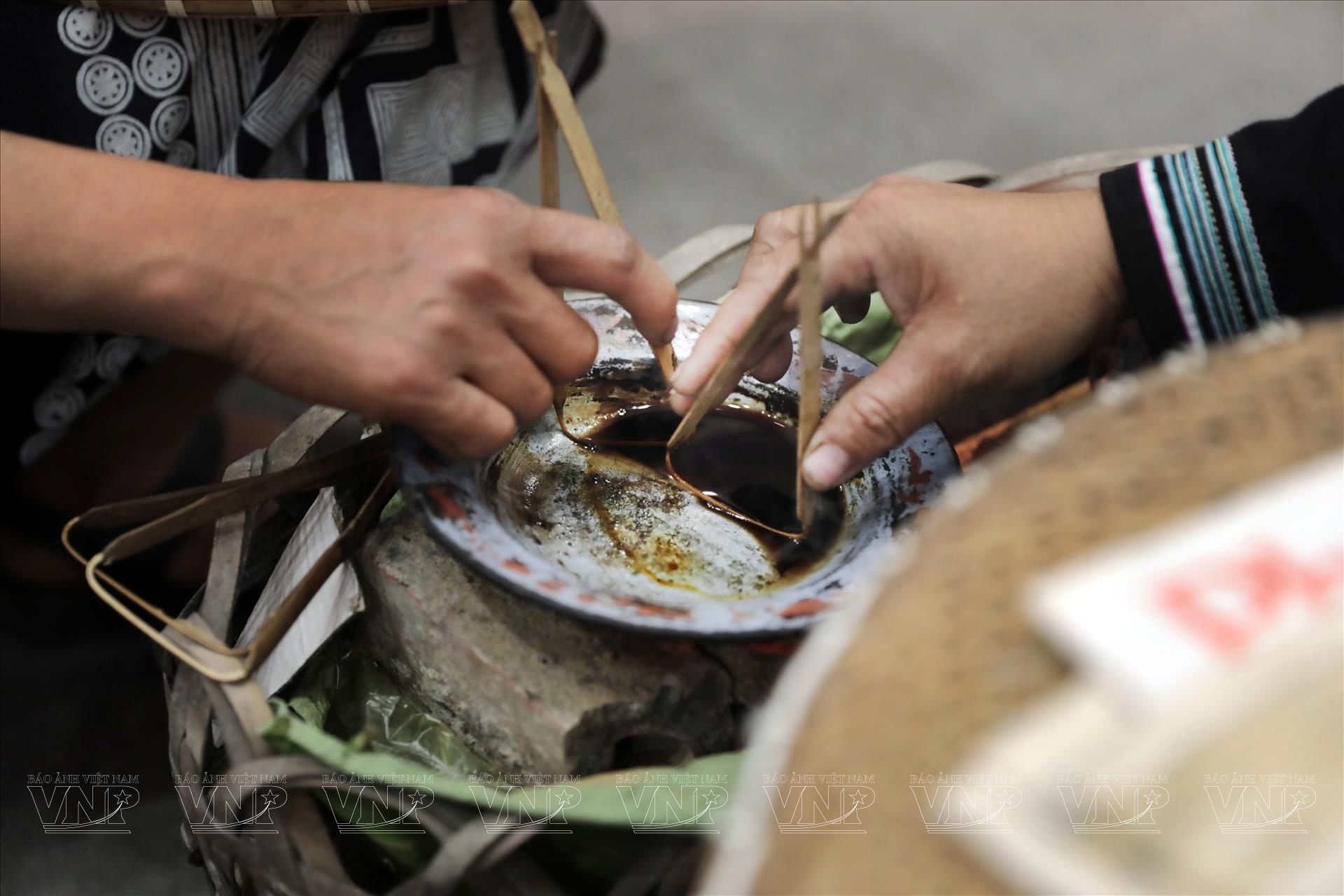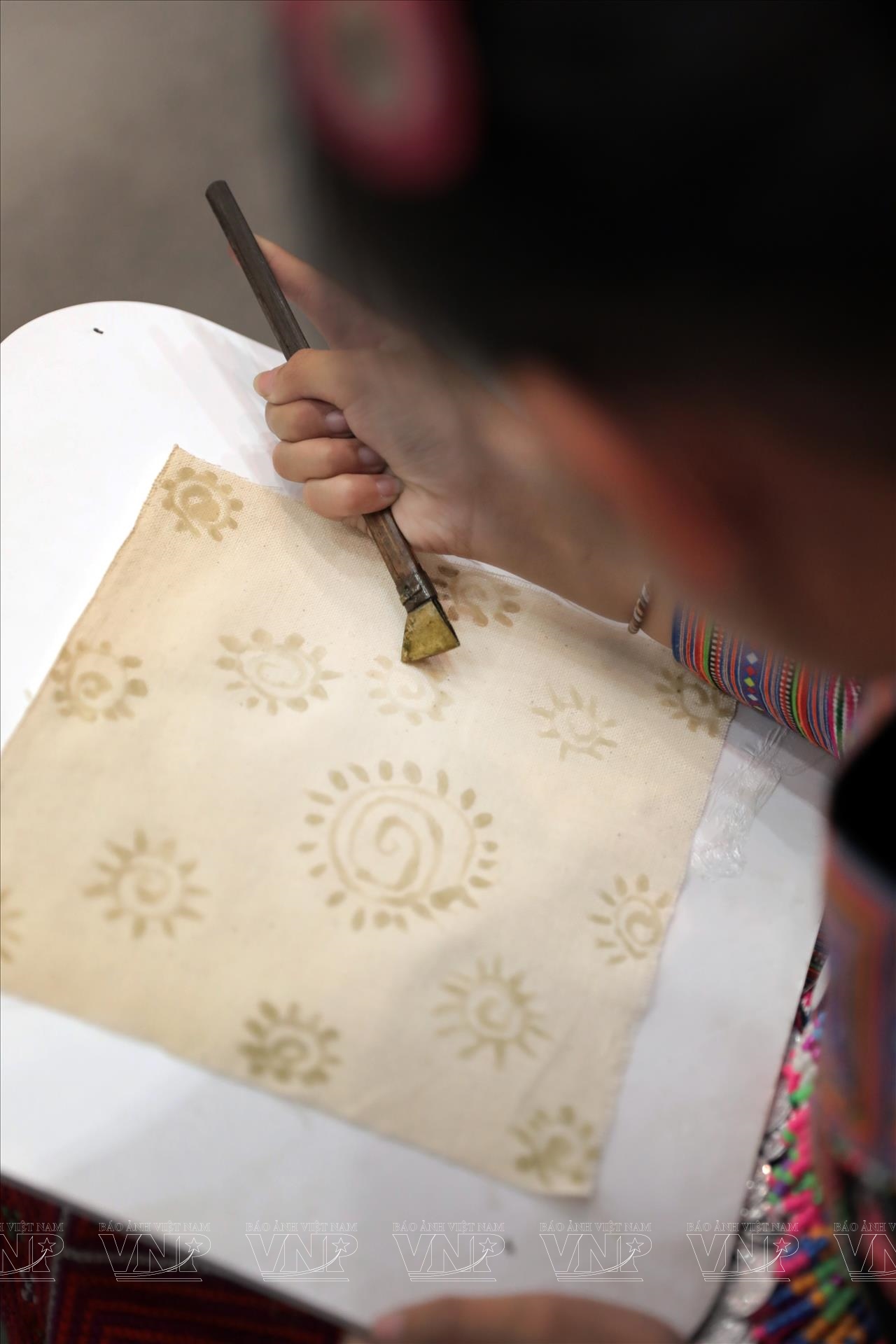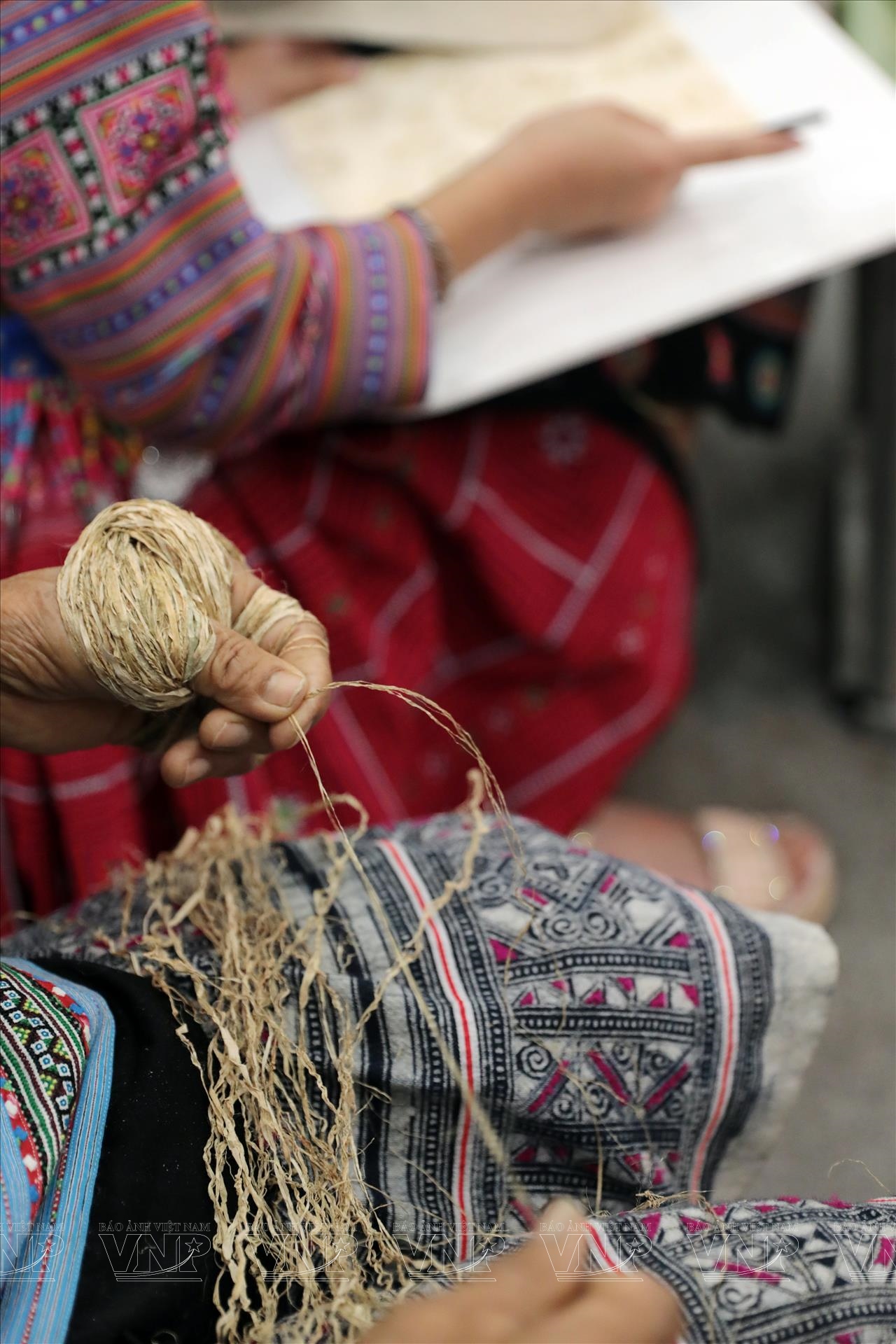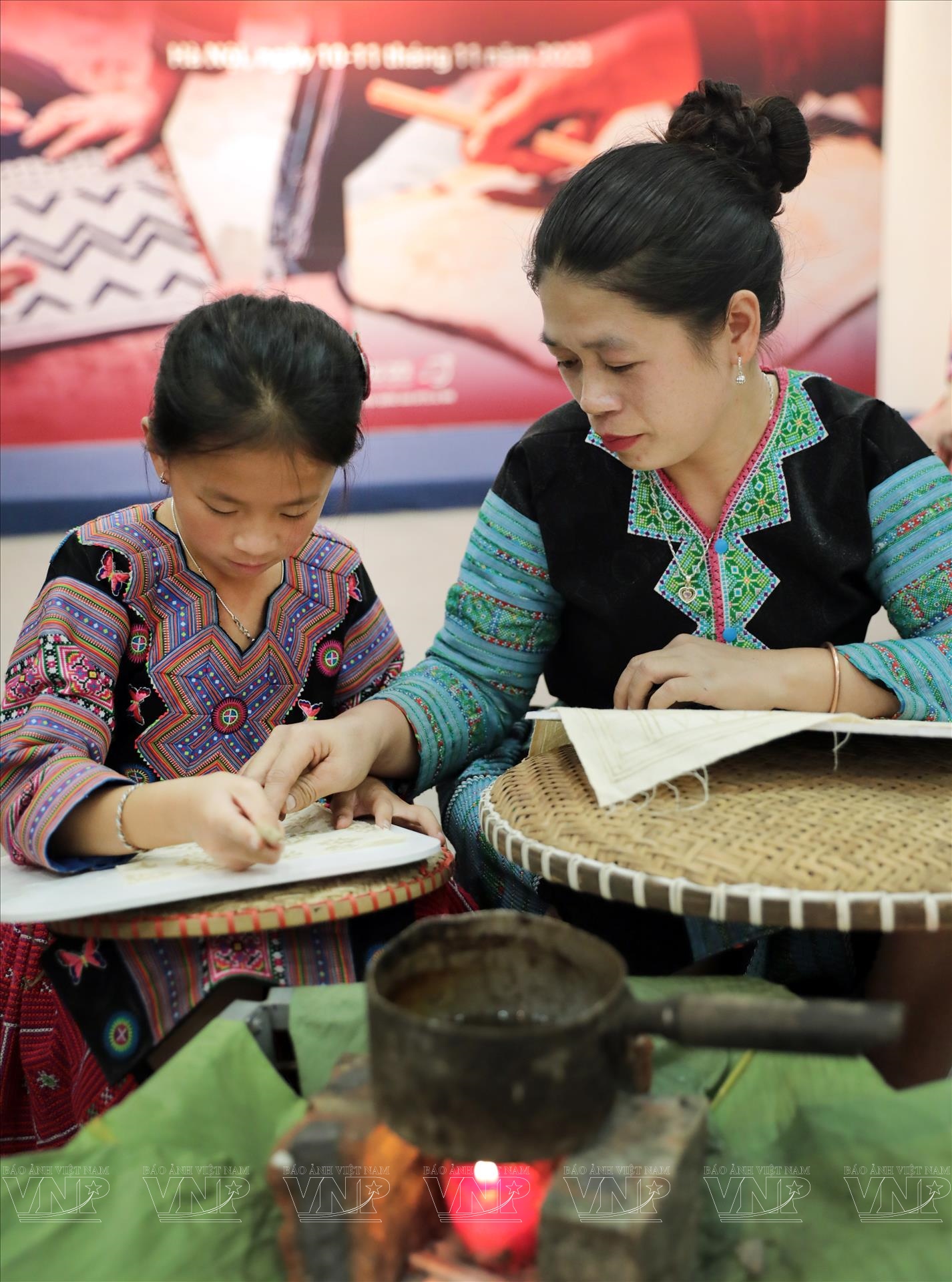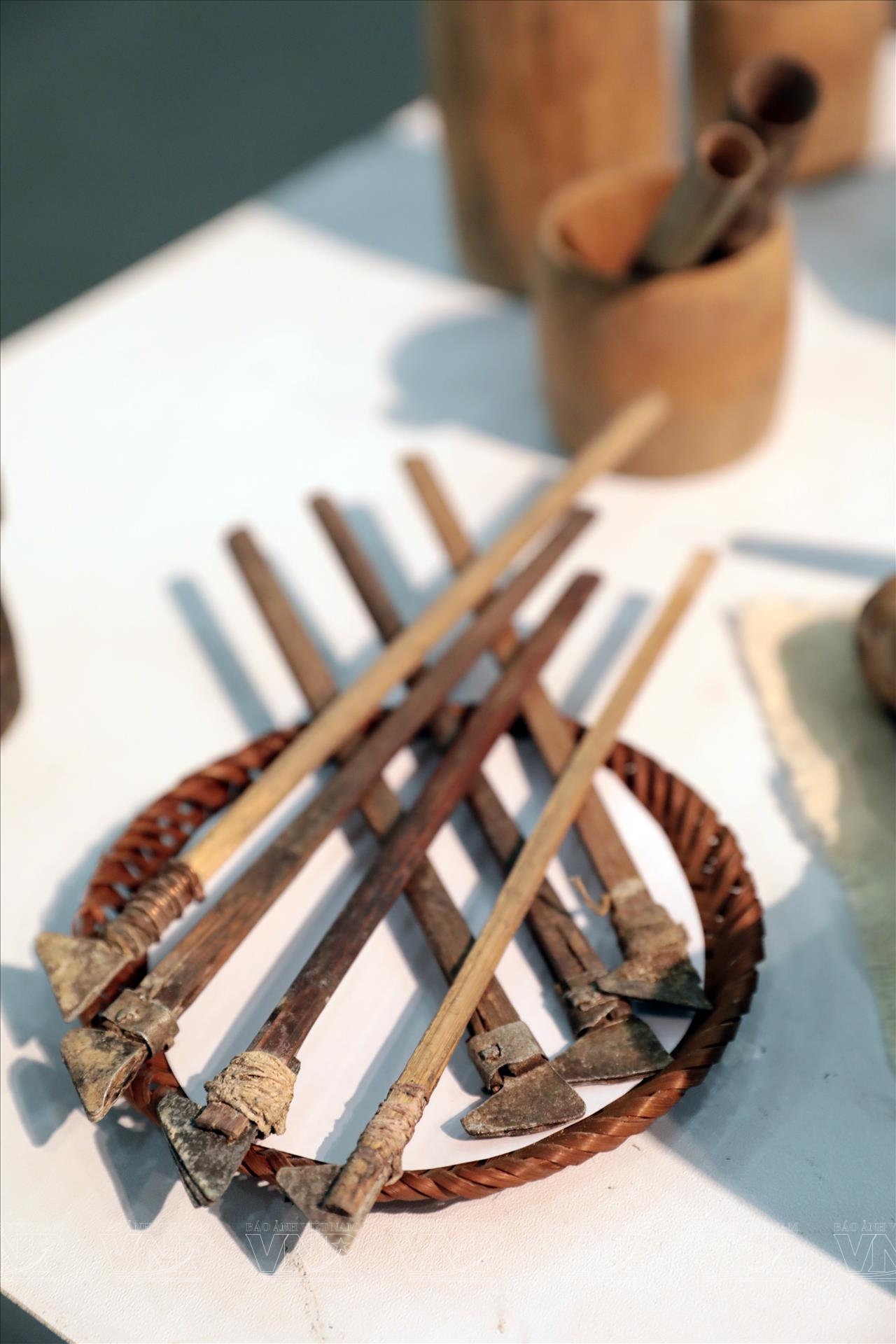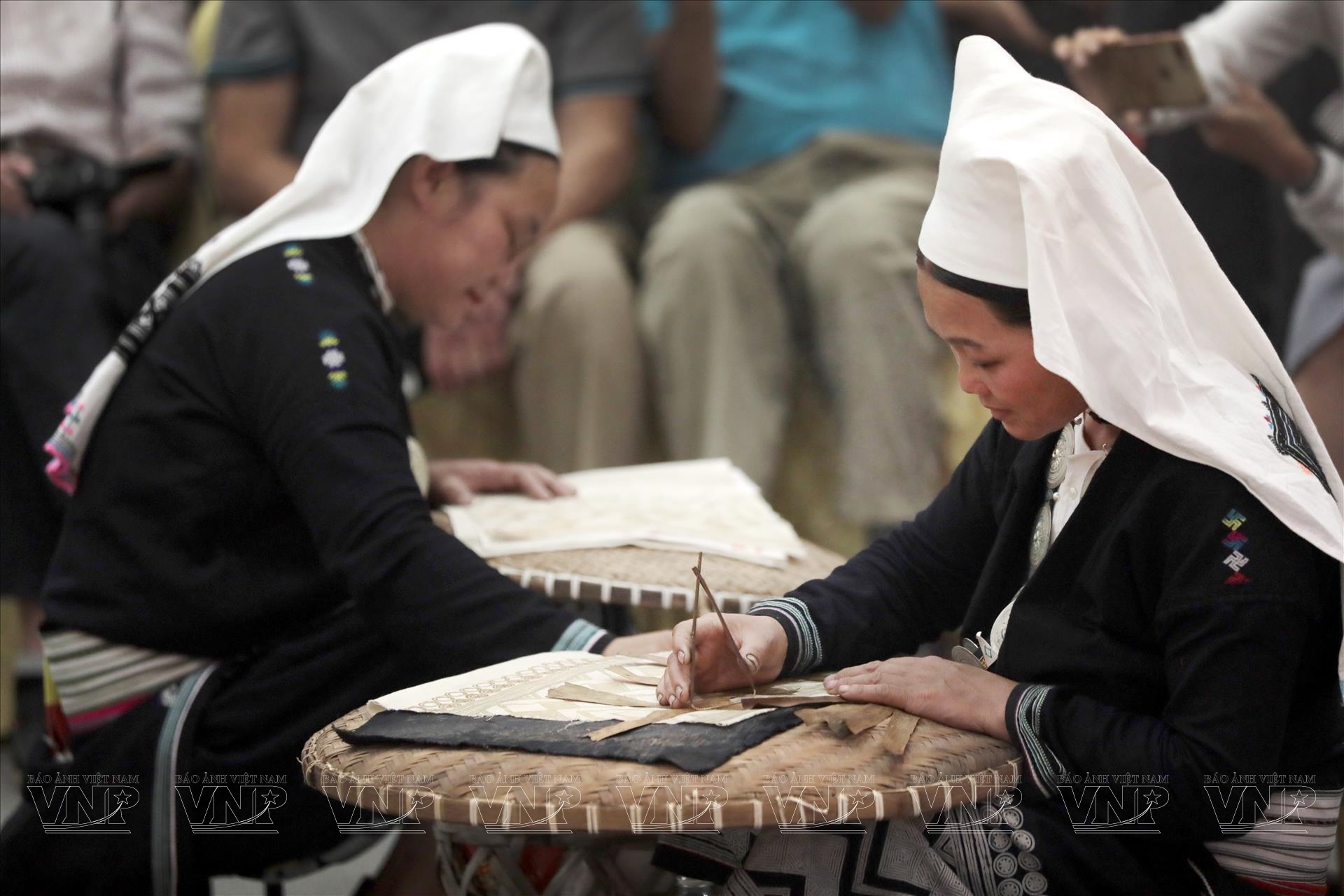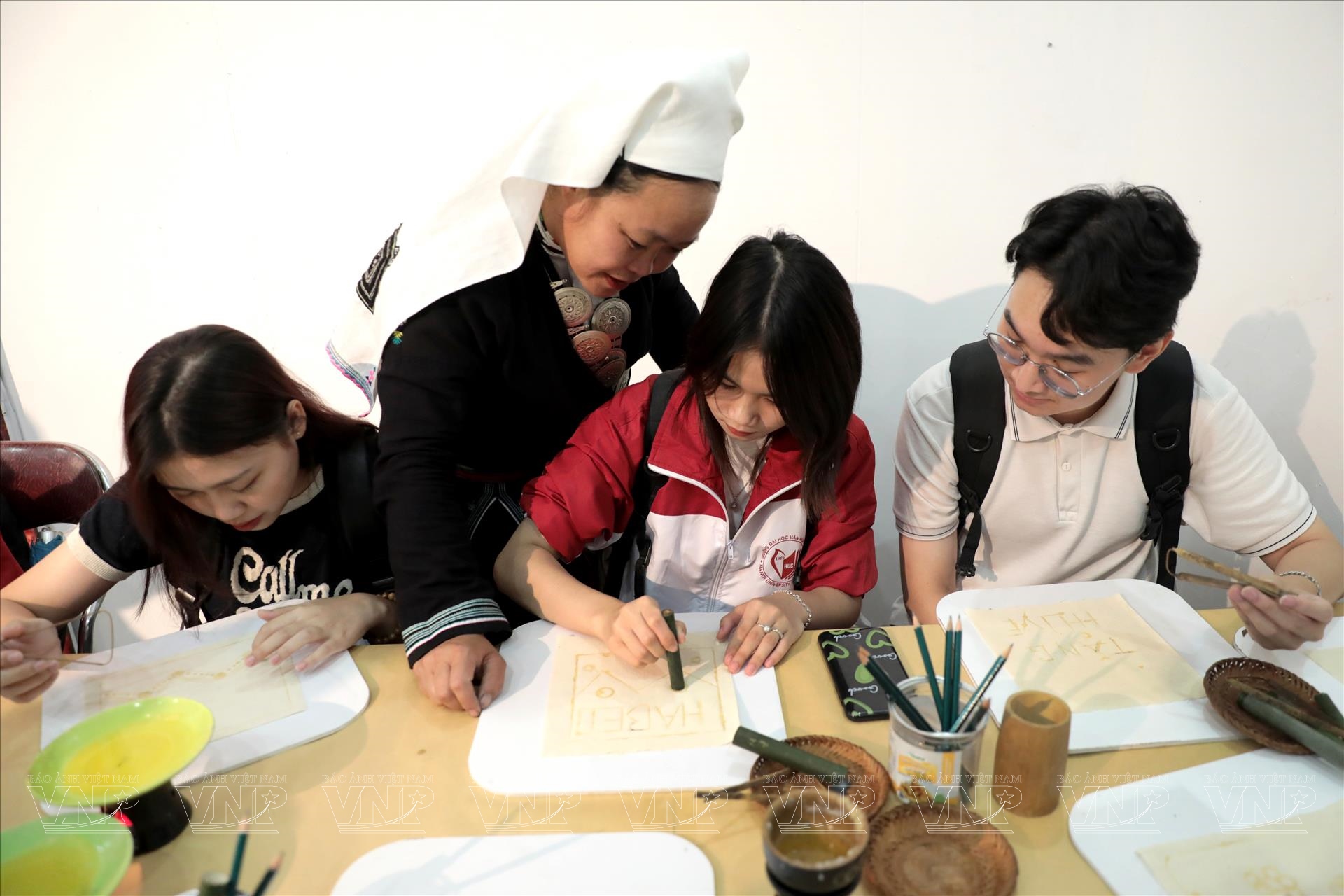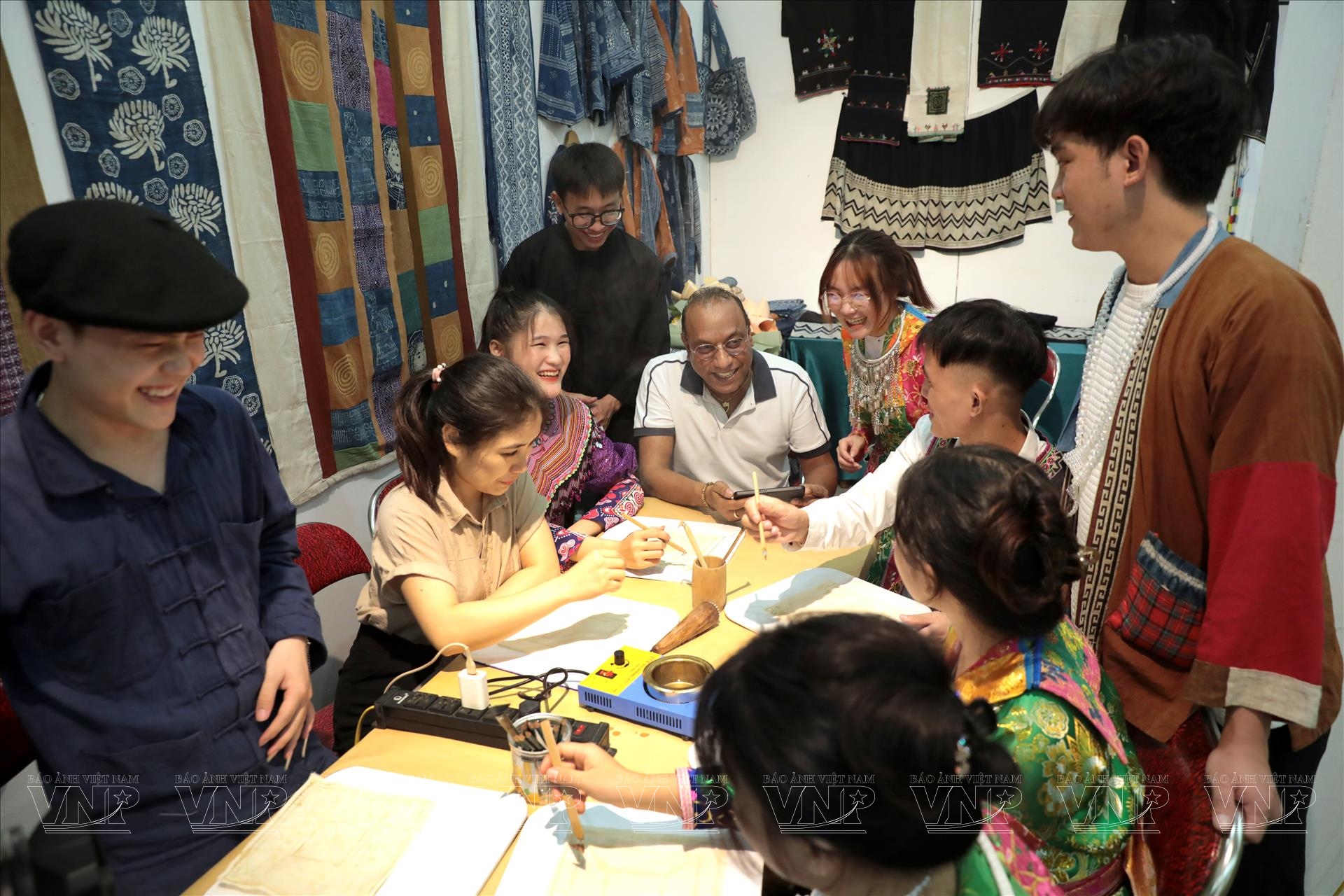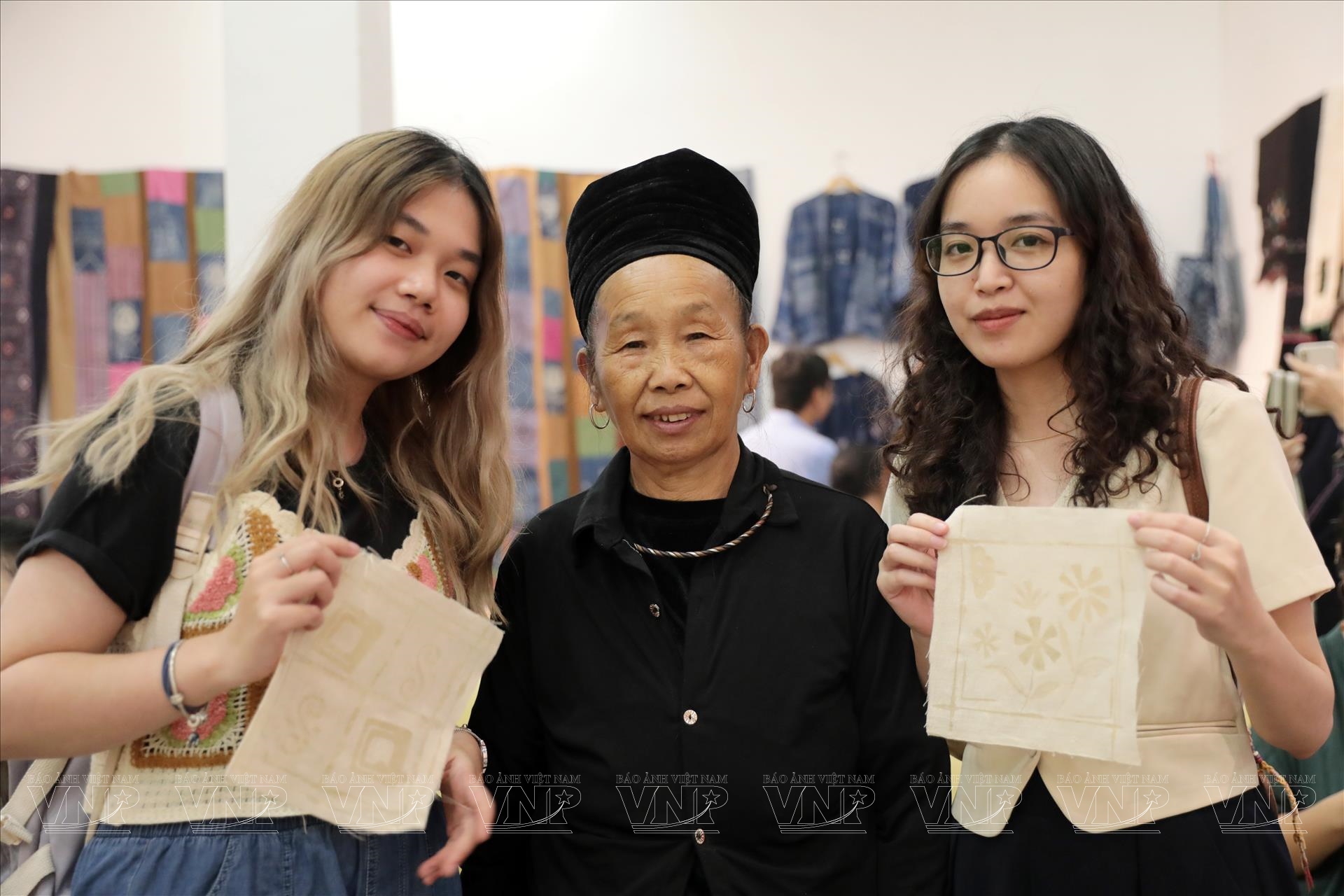Unique "Beeswax - Indigo"
Recently, an event titled "Beeswax - Indigo" took place at the Vietnam Women's Museum in Hanoi, featuring artisans from the Mong (Hoa Binh province) and the Dao (Cao Bang province). It drew significant attention from the public.
The event is one of the communication activities under Project No.8 carried out by the Vietnam Women's Museum. It aims to spread the cultural values and beautiful traditions of ethnic minority women, contributing to the goal of sustainable development for these communities.
Beeswax and indigo are known as two natural materials. Through skillful hands and rich imaginations, ethnic women have created a unique and creative cultural imprint through the art of beeswax painting on fabric. This technique is commonly used on the clothing of Mong women and women of the Dao Tien. It is one of the traditional handicraft skills that have been preserved to this day.
The beeswax patterns are painted on fabric, which needs to be flattened before painting to ensure even and beautiful wax absorption, without smudging during the process. The tools used can be a smooth flat stone on both sides to smooth and polish the fabric, creating a smooth and shiny surface. The technique of beeswax painting on fabric requires the skill, and precision of the women. Only with these qualities can the patterns be even, beautiful, and sharp.
From ancient times, the Mong have been highly conscious of preserving their traditional culture, including the technique of beeswax painting on linen fabric. The patterns on the fabric of the Mong serve as historical records, telling stories about their worldview and the vibrant nature of the mountainous regions. Women use melted beeswax to paint patterns on the fabric.
For Mong women, the drawing tool is a special pen with a curved nib made of brass. Dao women use triangular frames or small bamboo tubes to create straight lines or circles. After completing the drawing, the wax is allowed to dry. Once the wax is dry, the fabric is dyed with indigo several times, then immersed in boiling water to dissolve the wax completely. The wax-protected patterns, now in contrasting colors, emerge on the dark indigo-dyed fabric. These are the steps involved in completing a piece of fabric adorned with intricate beeswax patterns.
Nguyen Thi Tuyet, the Director of the Vietnam Women's Museum, stated that the event "Beeswax - Indigo" is one of the activities aimed at spreading the cultural values of women across the entire homeland. She expressed hope that the handcrafted products of these women would contribute to creating a sustainable value.
At the event, visitors not only had the opportunity to engage in interactive sessions and experience beeswax painting alongside artisans from the Mong and Dao Tien but also listened to their concerns and reflections regarding the direction of their products and how to economically develop their cultural uniqueness. In addition, attendees had the chance to explore the beauty of traditional beeswax painting techniques through the photo exhibition "Beeswax - Indigo," try on traditional costumes and capture memorable moments in a space rich with the cultural essence of the highlands.
In the face of an increasingly modern fashion trend, Ban Thi Lien still believes that "the attire of our ethnic group will never fade away because those garments, those dresses, accompany the Dao throughout their lives. The succeeding generations inherit, preserve, and develop the traditions." She also hopes that the cultural heritage of her ethnic group will spread far and wide, throughout every corner of the homeland.
By Tran Thanh Giang/VNP Translated by Nguyen Tuoi
